What Kind of Whales You Can See in Tenerife
Do you want to know what species of cetaceans you will be able to see if you go on a cruise in the waters of Tenerife? Keep reading!
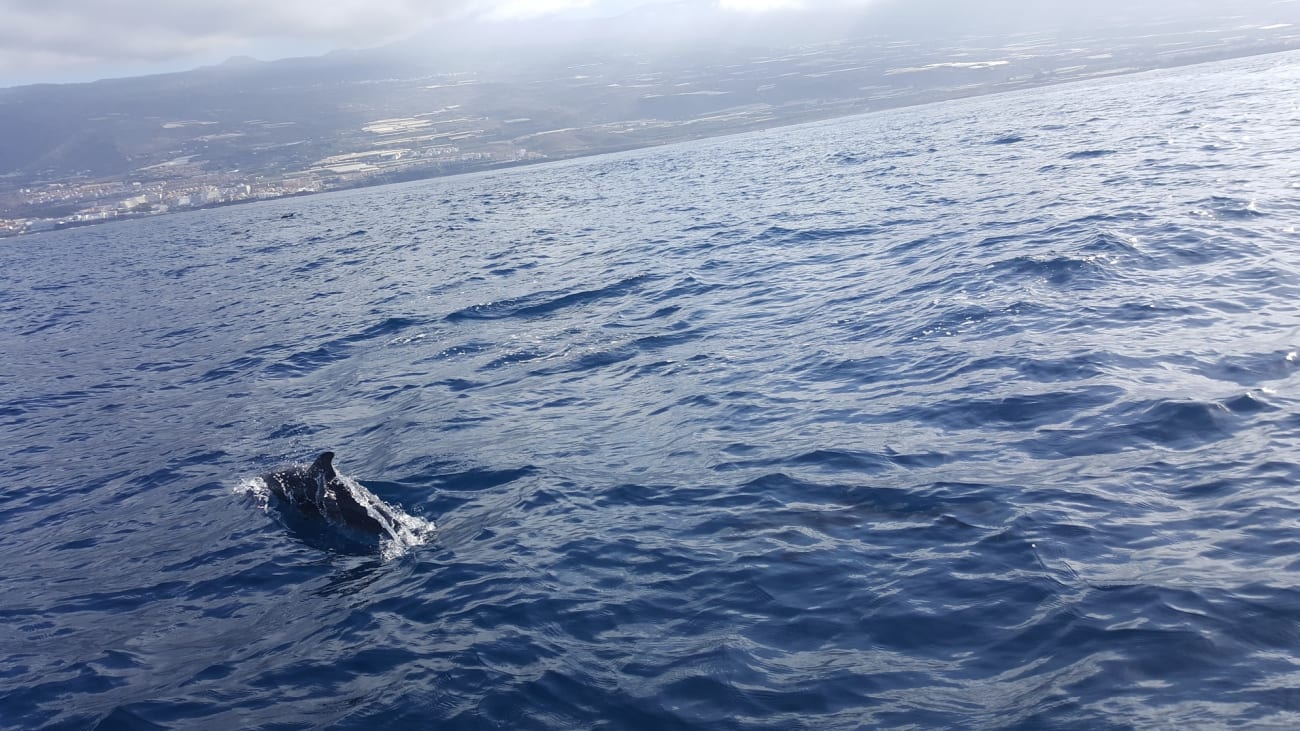
Whale watching in Tenerife | ©Danny UK
Thanks to the mild climate that the Canary Islands enjoy all year round and the fantastic location of Tenerife in the Atlantic Ocean, this island is a magnificent site and a world reference for whale and dolphin watching. It is best to embark on a whale and dolphin watching excursion in Tenerife to make the most of the day.
Tenerife is home to about twenty different species of cetaceans that share the Canary waters with fish, turtles and other marine creatures.
In this post we review some of the species that you can see during a boat trip so you can easily identify them and get to know them a little better before setting sail.
1. Bottlenose dolphin
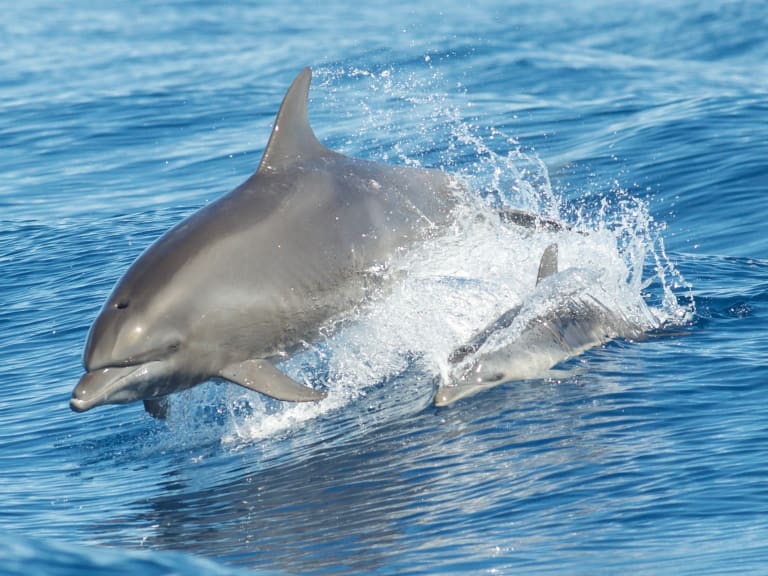
Of all the existing dolphin species, the bottlenose dolphin is the best known. Gifted with great intelligence and a sociable character, you will recognize them because they are dark gray in color and often surf the wake left by boats when sailing.
It is considered a resident species that can live for about 30 years in groups of more than a dozen individuals. They can weigh between 150 and 500 kg and measure between 2.5 and 3 meters long.
Bottlenose dolphins collaborate with other herd mates to hunt their prey and capture them with their teeth by swallowing them without chewing.
2. Pilot whale
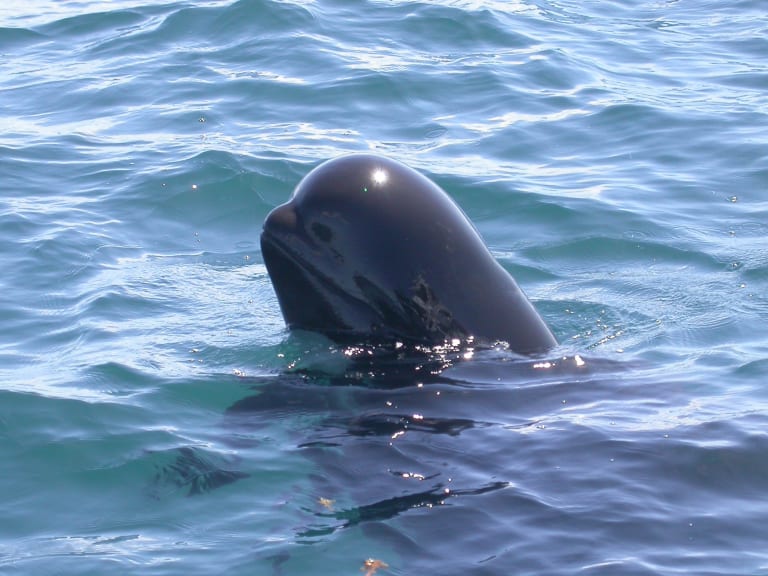
Also known as pilot whale, this animal belongs to the dolphin family but because of its large size it is considered a whale. After the killer whale, they are the largest oceanic dolphins and can reach 5 meters and weigh up to 2 tons.
It is another resident species in the Canary Islands and they are very easy to see in the water. Their color is almost black and their head has a convex shape with a small beak. They feed especially on squid although they also eat fish.
Pilot whales are very social cetaceans and usually live in groups of up to thirty individuals.
3. Sperm whale
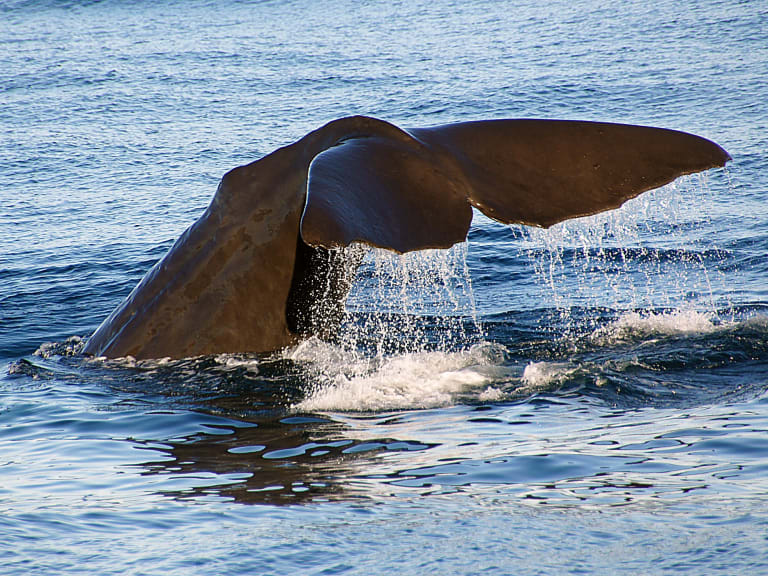
This impressive mammal can be seen in Tenerife sporadically. It is easily identified by its striated skin and its large head, which contains the largest brain in the world. They can exceed 18 meters in length and 50 tons in weight.
It is the largest toothed predator in existence and feeds mainly on squid and fish, diving up to three kilometers deep.
Sperm whales are social animals that live in small groups and are currently listed as a vulnerable species by the IUCN after the intense hunting that took place from the 17th to the 20th century.
4. Killer whales
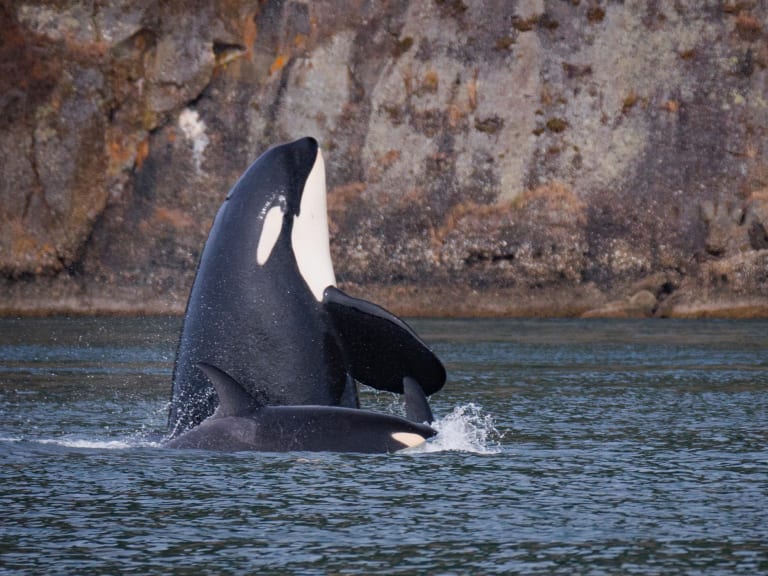
Being a migratory species, it is difficult but not impossible to see this animal in Tenerife, so you may be lucky. You will easily identify it by its black and white colors.
Killer whales can reach up to 9 meters and weigh up to 5,500 kg being a very versatile predator that combines cunning with speed and strength. Their diet is very varied and they can feed on fish, squid, seals and even white sharks, which earned them the nickname of killer whales.
They live in groups of less than forty specimens and there are individuals that can reach 100 years of age. That's nothing!
5. False killer whale
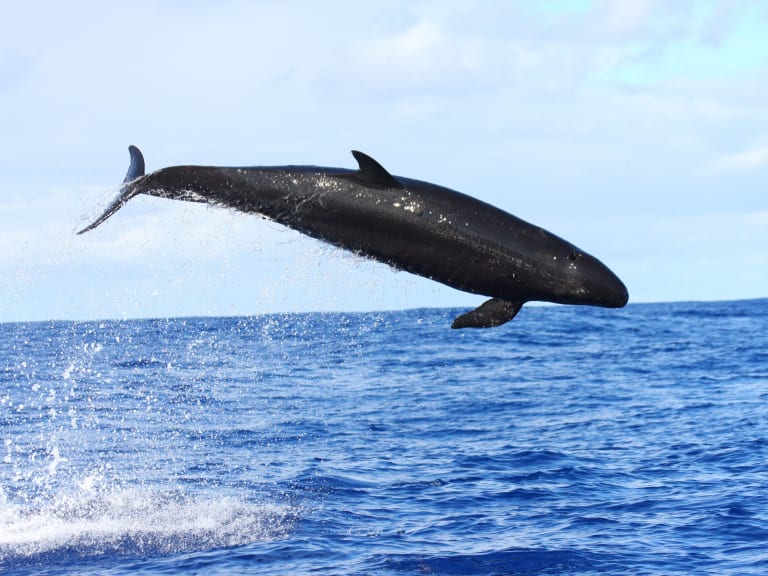
This cetacean is a common sight in Tenerife. It is a sociable animal that usually lives in groups of more than ten specimens and can weigh 1,500 kg and reach 6 meters.
It is called false killer whale because it shares some characteristics with the killer whale. On the one hand, at first sight both species are similar in shape. Also in terms of feeding and behavior, since this creature eats squid and fish and hunts other cetaceans.
6. Spotted dolphin
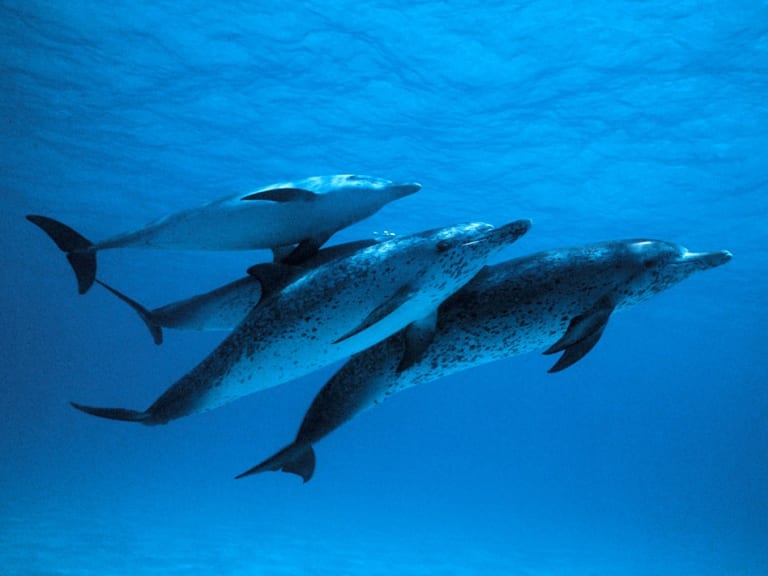
This is the smallest dolphin seen in the Canary waters and a common species in the Atlantic, characterized by the black and white spots on its skin. However, the calves and the youngest specimens lack them, which is a distinctive sign of maturity.
It is also known as the painted dolphin and was first discovered almost two centuries ago.
The character of this animal is curious and sociable. In fact, it can often be seen swimming and doing acrobatics near the boats, so keep your camera handy in case this dolphin surprises you with a funny trick during your cruise.
7. Rough-toothed dolphin
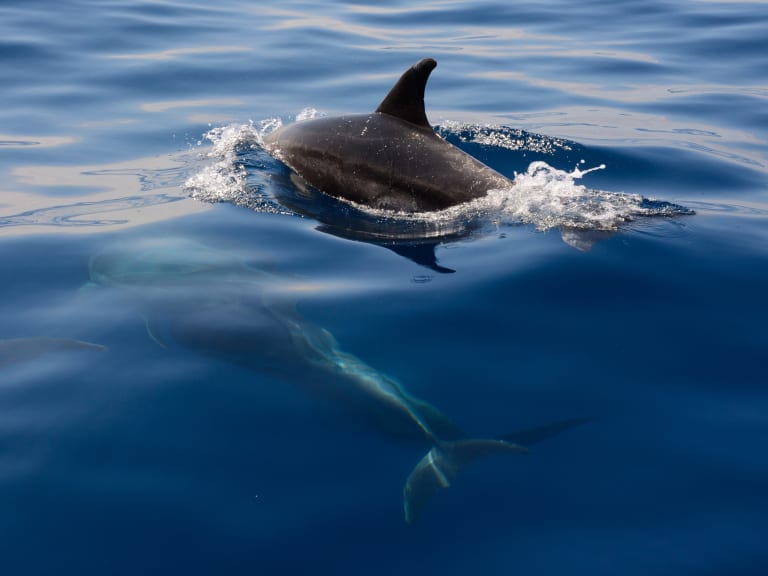
This animal is a little known species in general, although in the Canary Islands they can be seen occasionally when they come to these waters to reproduce and feed without a defined seasonality.
It is also called narrow-snouted dolphin and its gray colored body is similar to other dolphins although they are distinguished by the pink and white tone of its snout, belly and throat.
The rough-toothed dolphin is characterized by being a fast and agile diver that can dive for fifteen minutes to hunt fish and squid on which they feed. They usually live in herds of 10 to 30 individuals.
8. Humpback whale
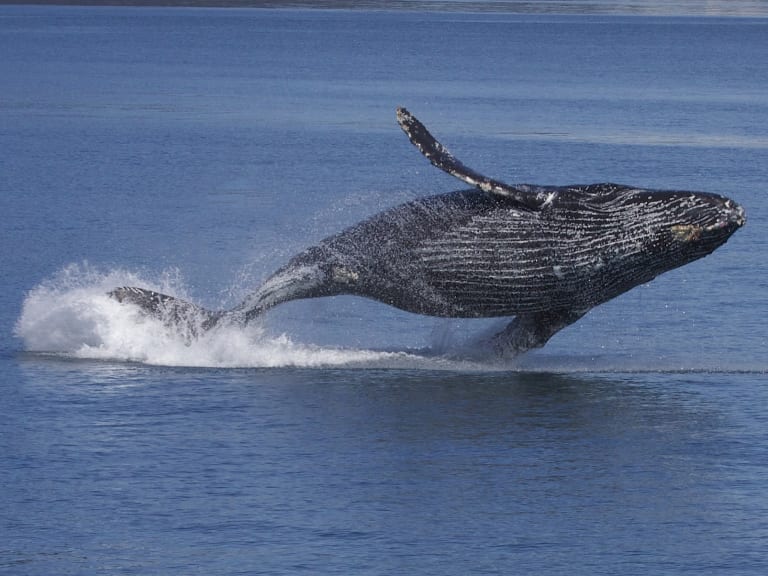
Another species rare to see in Tenerife but possible. It is a friendly animal that socializes with other species of whales and dolphins. In addition, it likes to perform acrobatics and often propels itself to break through the surface of the water and then falls down hitting it. It is an amazing spectacle!
The humpback whale can measure up to 19 meters and weigh 36,000 kg and, like other large cetaceans, it was hunted and suffered a great persecution that caused its population to be reduced by 90%. Fortunately, measures were taken to protect the species and it is currently estimated that there are around 80,000 specimens.
9. Other species of cetaceans to see in Tenerife
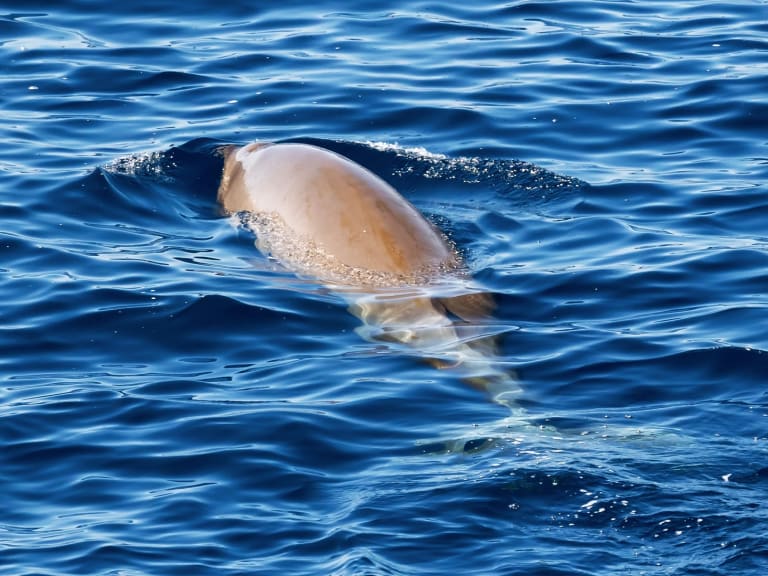
If you are lucky during the boat trip in Tenerife you may even see rarer species such as Fraser dolphins, pygmy sperm whales or beaked whales, among others, so keep your eyes open!
10. What other species can I see if I snorkel in Tenerife?
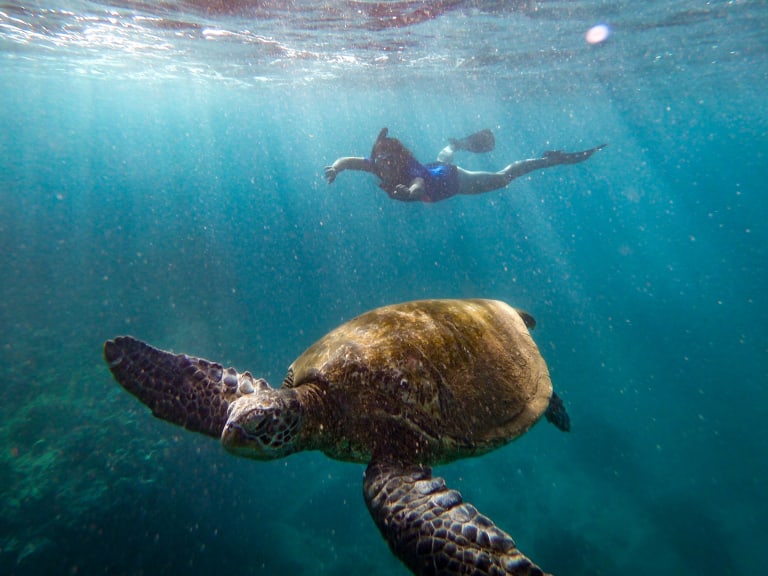
If you are going to take advantage of the cruise to see whales and dolphins in Tenerife to also practice some snorkeling, pay attention in the water because you can swim with turtles, fish, octopus, crabs, jellyfish, stingrays, sea urchins or starfish. The experience is amazing.
To keep in mind to enjoy the largest number of marine species in Tenerife
The chances of seeing whales and dolphins during a boat trip in Tenerife are quite high and you have nothing to worry about since Tenerife has resident populations of bottlenose dolphins and pilot whales that join other migratory species depending on the season. You will always see some of them jumping, surfing or looking curiously at the tourists!
It is best to go by boat
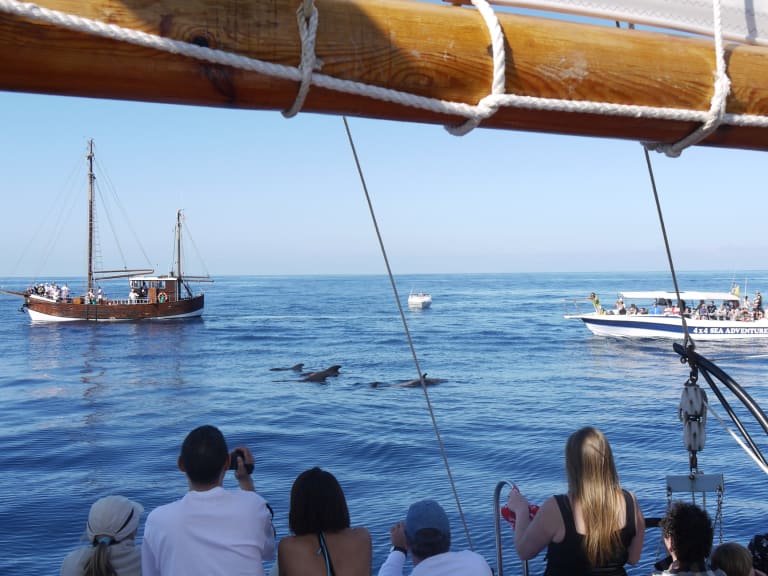
If you are passionate about nature, a very appealing plan that you will want to experience in Tenerife during your vacations is to go on a whale watching cruise in the middle of the ocean. You can't leave the Canary Islands without doing this activity!
There are many boat tours in Tenerife that go into the Atlantic Ocean so that tourists can observe these fascinating animals up close in their own habitat and enjoy a unique and unforgettable experience.
The boats are usually run by experts in the field and they will know how to take you exactly to the area where the largest number of marine species live, always preserving their habitat and without interrupting their routine.
Keep in mind the best time of the year for whale watching
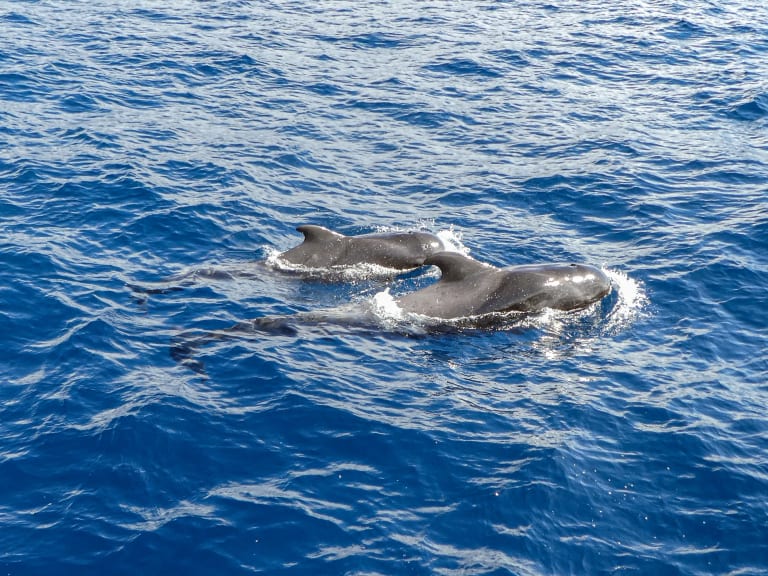
Given Tenerife's privileged location, the whale and dolphin watching season extends throughout the year, although spring and winter are the best times to see whales and dolphins on the island. Especially in the area that separates La Gomera from Tenerife.
As for the rest of the seasons, it is worth mentioning that summer is the breeding season, so it is likely that you will be able to see the offspring of these species. As for autumn, it is the best time to set sail although the sightings are less constant.
For more information about this topic, I advise you to read the post Best time for whale watching in Tenerife.
The season to see cetaceans on the island extends throughout the year but being wild animals living in freedom their behavior is unpredictable and depends on factors such as the time of year, the time of day, the food available or the state of the sea.
Where is the highest concentration of marine species in Tenerife?
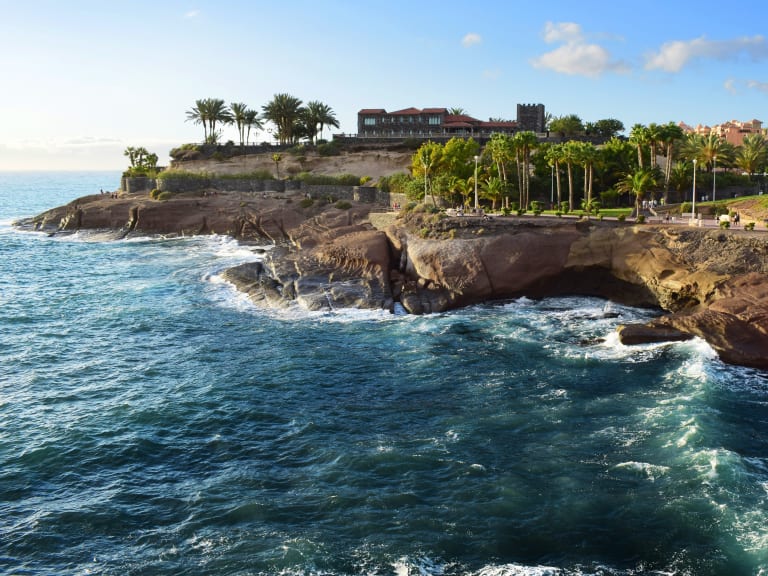
In the south. Normally, most whale watching cruises in Tenerife depart from Puerto de los Cristianos, Puerto Colón (in Costa Adeje, one of the most touristic areas of the island) or from Puerto Deportivo de Los Gigantes (Santiago del Teide).
I recommend the latter option as the chances of seeing cetaceans departing from Los Gigantes are higher and you will also have magnificent views of the cliffs along the way.
Why whale watching in Tenerife?
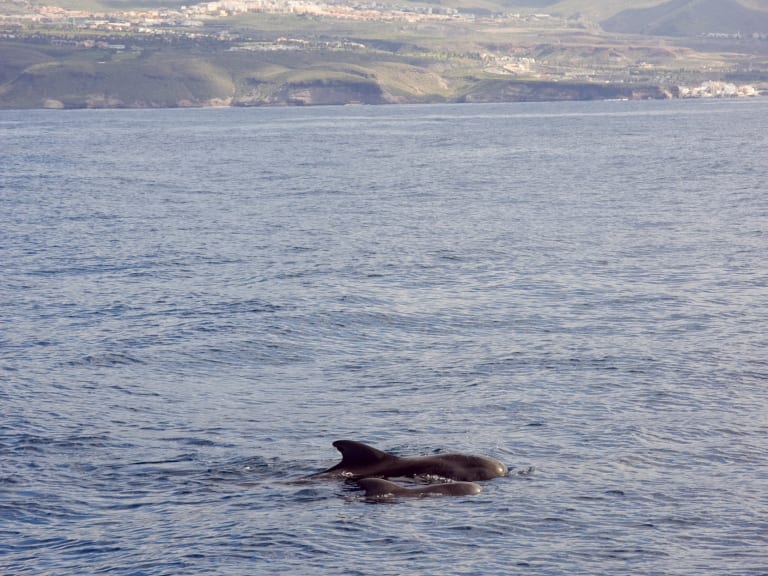
Tenerife's excellent location makes the island a wonderful place of world reference for whale watching. In fact, the region that separates Tenerife from La Gomera is listed as the first whale sanctuary in Europe.
There are several reasons why the Canary archipelago attracts a large number of different cetaceans.
On the one hand, the deep ocean floor of up to 3,000 meters resulting from the volcanic origin of these islands offers these animals a respite from the strong currents of the Atlantic. On the other hand, the Canary Islands are in a way a neutral ground for the migration of species, marking the northern limit for tropical waters and the southern limit for cold waters.
It is therefore relatively easy to see migrating whales and dolphins in their environment, especially at certain times of the year.
